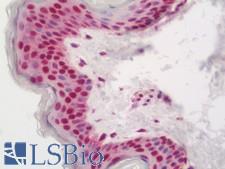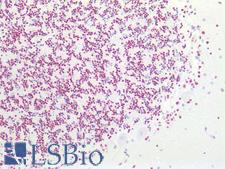Login
Registration enables users to use special features of this website, such as past
order histories, retained contact details for faster checkout, review submissions, and special promotions.
order histories, retained contact details for faster checkout, review submissions, and special promotions.
Forgot password?
Registration enables users to use special features of this website, such as past
order histories, retained contact details for faster checkout, review submissions, and special promotions.
order histories, retained contact details for faster checkout, review submissions, and special promotions.
Quick Order
Products
Antibodies
ELISA and Assay Kits
Research Areas
Infectious Disease
Resources
Purchasing
Reference Material
Contact Us
Location
Corporate Headquarters
Vector Laboratories, Inc.
6737 Mowry Ave
Newark, CA 94560
United States
Telephone Numbers
Customer Service: (800) 227-6666 / (650) 697-3600
Contact Us
Additional Contact Details
Login
Registration enables users to use special features of this website, such as past
order histories, retained contact details for faster checkout, review submissions, and special promotions.
order histories, retained contact details for faster checkout, review submissions, and special promotions.
Forgot password?
Registration enables users to use special features of this website, such as past
order histories, retained contact details for faster checkout, review submissions, and special promotions.
order histories, retained contact details for faster checkout, review submissions, and special promotions.
Quick Order
PathPlusTM HES5 Antibodies
HES5 (hes family bHLH transcription factor 5) is a transcriptional repressor protein that has important functions in regulating brain development and neurodifferentiation. HES5 works in concert with WNT3A to manage neural progenitor cell fate. It is also dysregulated in a number of cancers; upregulation of HES5 is correlated with proliferation and invasion in non-small cell lung cancer, squamous cervical carcinoma, and hepatocellular carcinoma, while loss of HES5 through epigenetic silencing plays a role in prostate cancer. It is progressively overexpressed in squamous cervical carcinoma and may be a useful marker of poor prognosis for early-stage cancers. In immunohistochemistry, HES5 has nuclear positivity in the brain and testes, with lower levels of expression in the lung, gastrointestinal tract, reproductive organs and a few other tissues throughout the body.
References: Int J Gynecol Cancer. 2007 Nov-Dec;17(6):1293-9, PMID: 17388915; Endocr Relat Cancer. 2015 Apr;22(2):131-44, PMID: 25560400; Oncol Rep. 2017 Jan;37(1):474-482, PMID: 27878283; Exp Mol Pathol. 2015 Dec;99(3):474-84, PMID: 26342546; Development. 2004 Nov;131(22):5539-50, PMID: 15496443; Stem Cells Dev. 2014 Jun 15;23(12):1328-39, PMID: 24548083
2 PathPlusTM Antibodies


☰ Filters
Products
Antibodies
(2)
Type
Primary
(2)
Target
HES5
(2)
Reactivity
Human
(2)
Mouse
(2)
Rat
(2)
Application
IHC
(1)
IHC-P
(2)
WB
(2)
ELISA
(2)
IF
(1)
Host
rabbit
(2)
Product Group
PathPlus Neuro
(2)
Isotype
IgG
(1)
Clonality
polyclonal pc
(2)
Format
Unconjugated
(2)
Publications
No
(2)

Neuroscience
HES5 Rabbit anti-Human Polyclonal Antibody
Mouse, Rat, Human
ELISA, IF, IHC, IHC-P, WB
Unconjugated
0.05 mg/$375

Neuroscience
HES5 Rabbit anti-Human Polyclonal Antibody
Mouse, Rat, Human
ELISA, IHC-P, WB
Unconjugated
50 µg/$375
Viewing 1-2
of 2
product results










